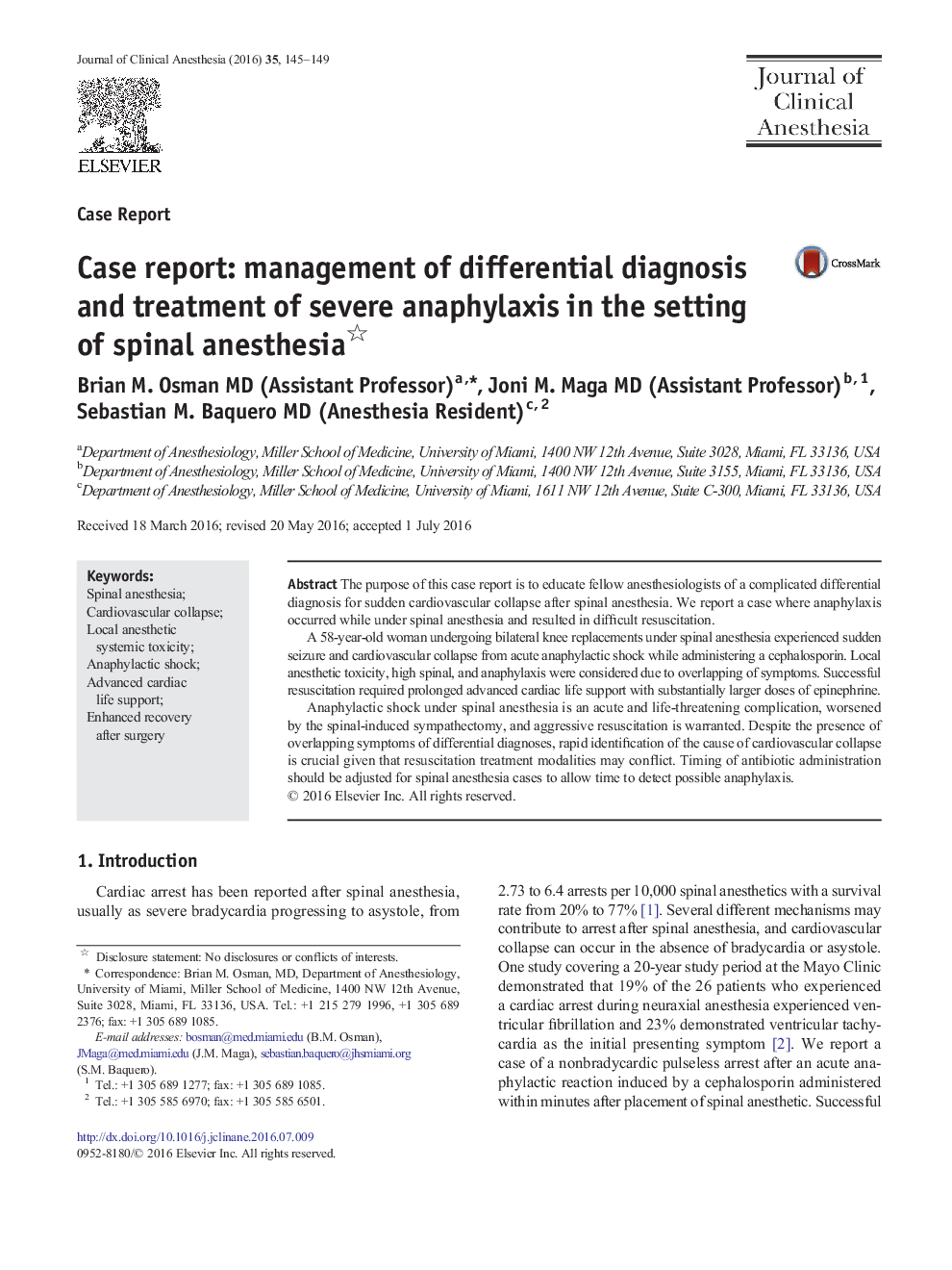| Article ID | Journal | Published Year | Pages | File Type |
|---|---|---|---|---|
| 5884371 | Journal of Clinical Anesthesia | 2016 | 5 Pages |
â¢Acute cardiovascular collapse after spinal anesthesia can occur for several reasons.â¢Rapid diagnosis is important as treatment modalities may conflict.â¢Acute anaphylactic shock poses unique challenges due to sympathectomy.â¢Prolonged advanced cardiac life support and significantly higher doses of epinephrine may be required.â¢Timing of antibiotic administration should be adjusted for spinal anesthesia cases.
The purpose of this case report is to educate fellow anesthesiologists of a complicated differential diagnosis for sudden cardiovascular collapse after spinal anesthesia. We report a case where anaphylaxis occurred while under spinal anesthesia and resulted in difficult resuscitation.A 58-year-old woman undergoing bilateral knee replacements under spinal anesthesia experienced sudden seizure and cardiovascular collapse from acute anaphylactic shock while administering a cephalosporin. Local anesthetic toxicity, high spinal, and anaphylaxis were considered due to overlapping of symptoms. Successful resuscitation required prolonged advanced cardiac life support with substantially larger doses of epinephrine.Anaphylactic shock under spinal anesthesia is an acute and life-threatening complication, worsened by the spinal-induced sympathectomy, and aggressive resuscitation is warranted. Despite the presence of overlapping symptoms of differential diagnoses, rapid identification of the cause of cardiovascular collapse is crucial given that resuscitation treatment modalities may conflict. Timing of antibiotic administration should be adjusted for spinal anesthesia cases to allow time to detect possible anaphylaxis.
